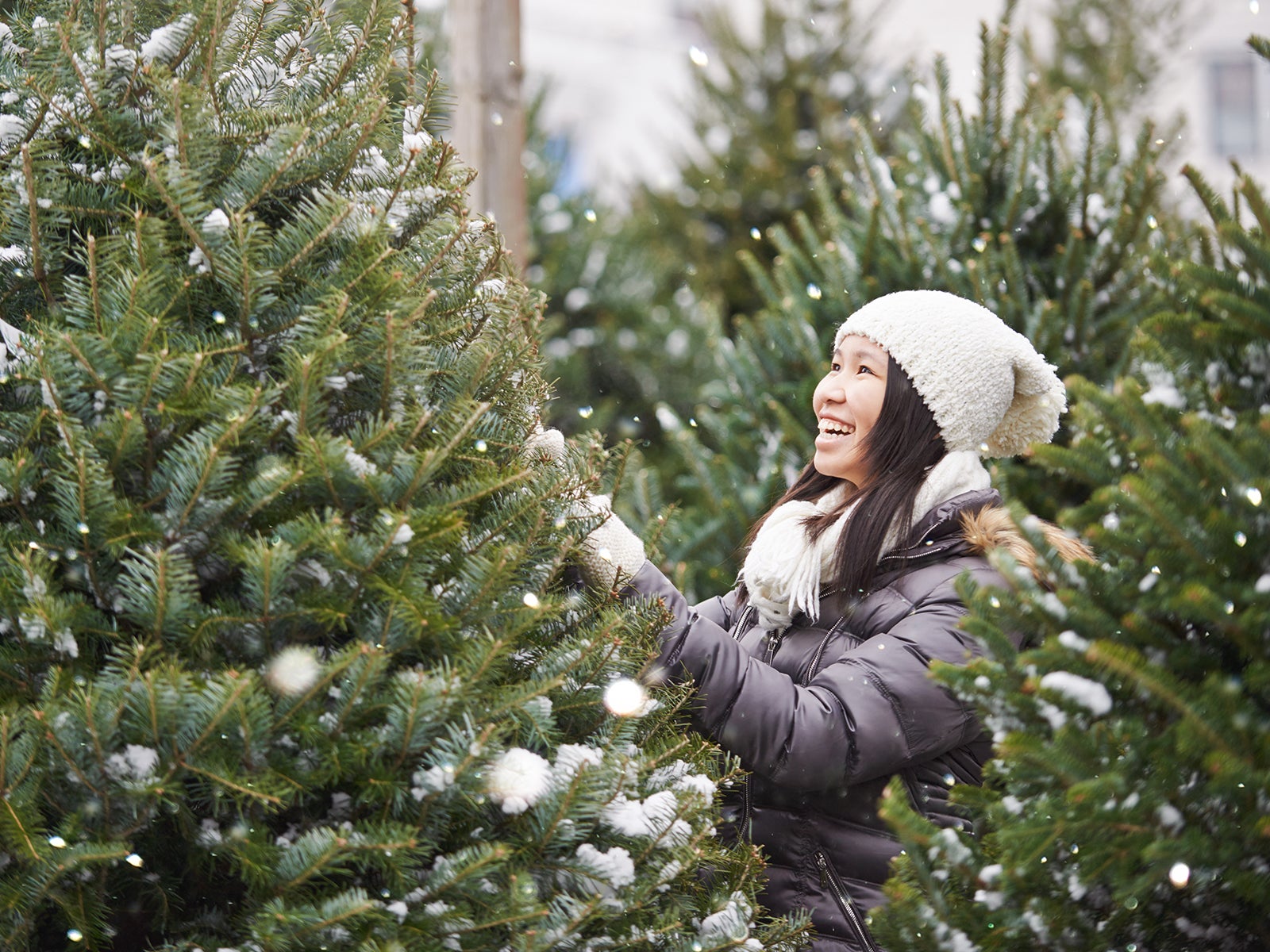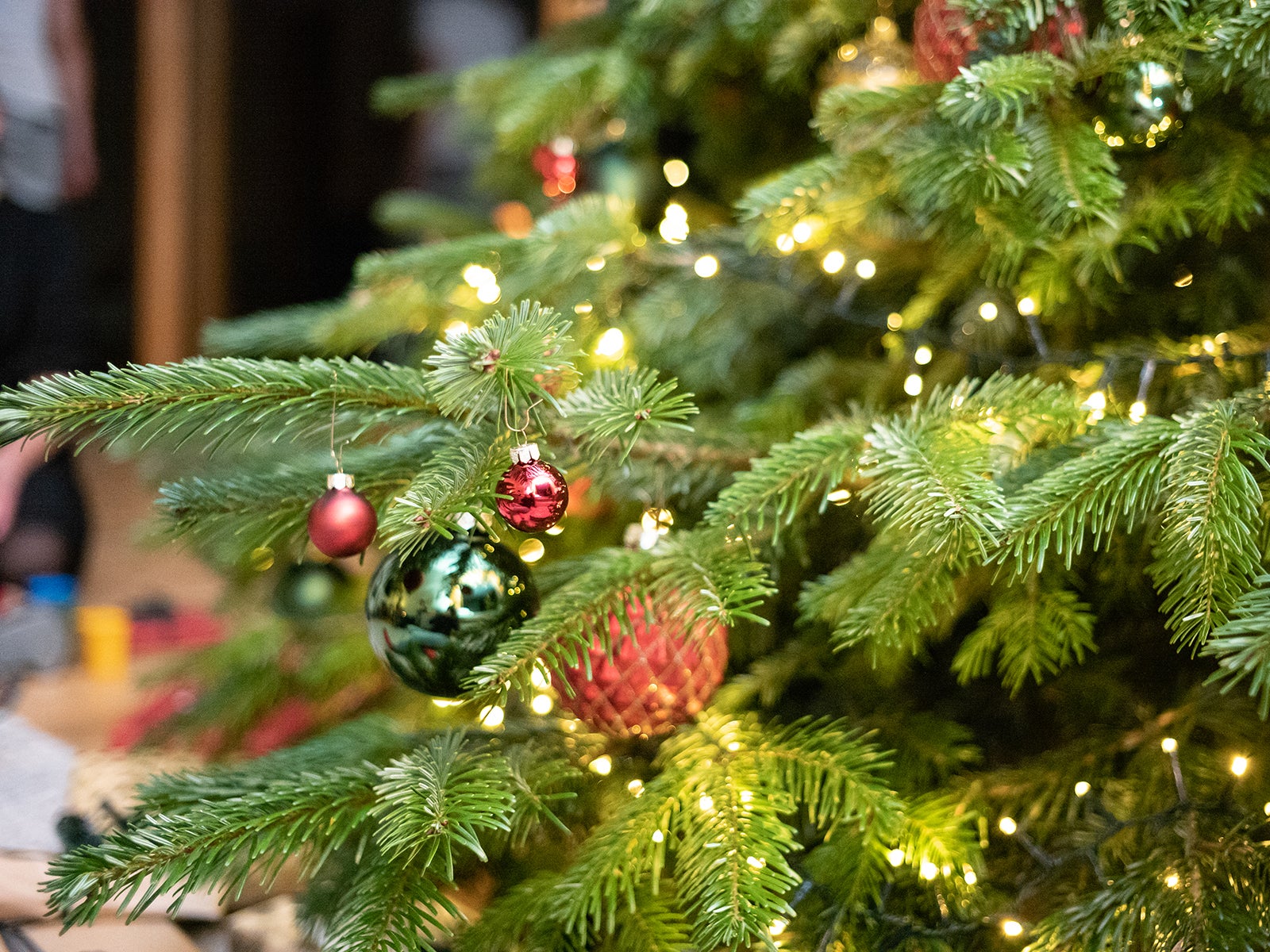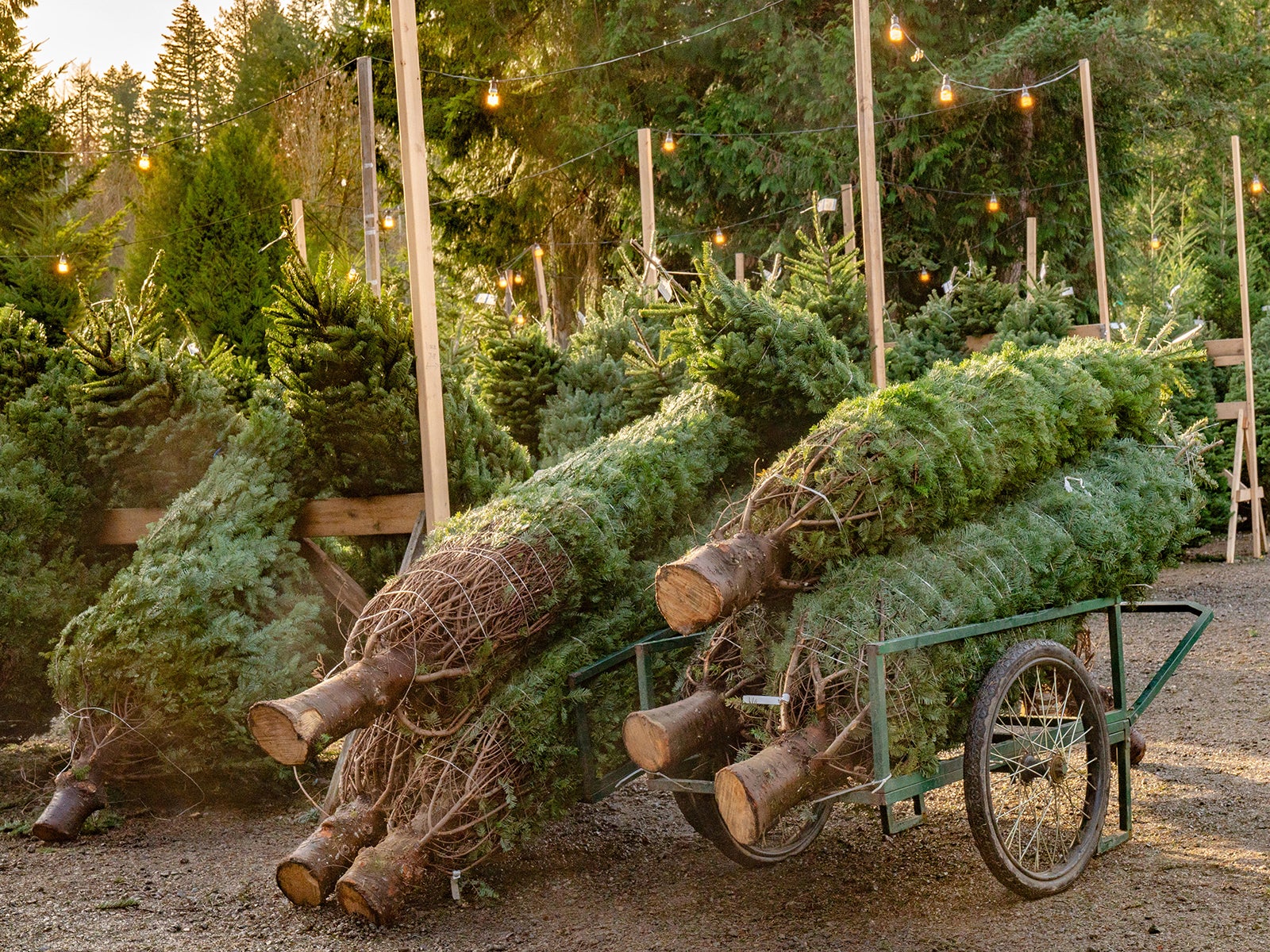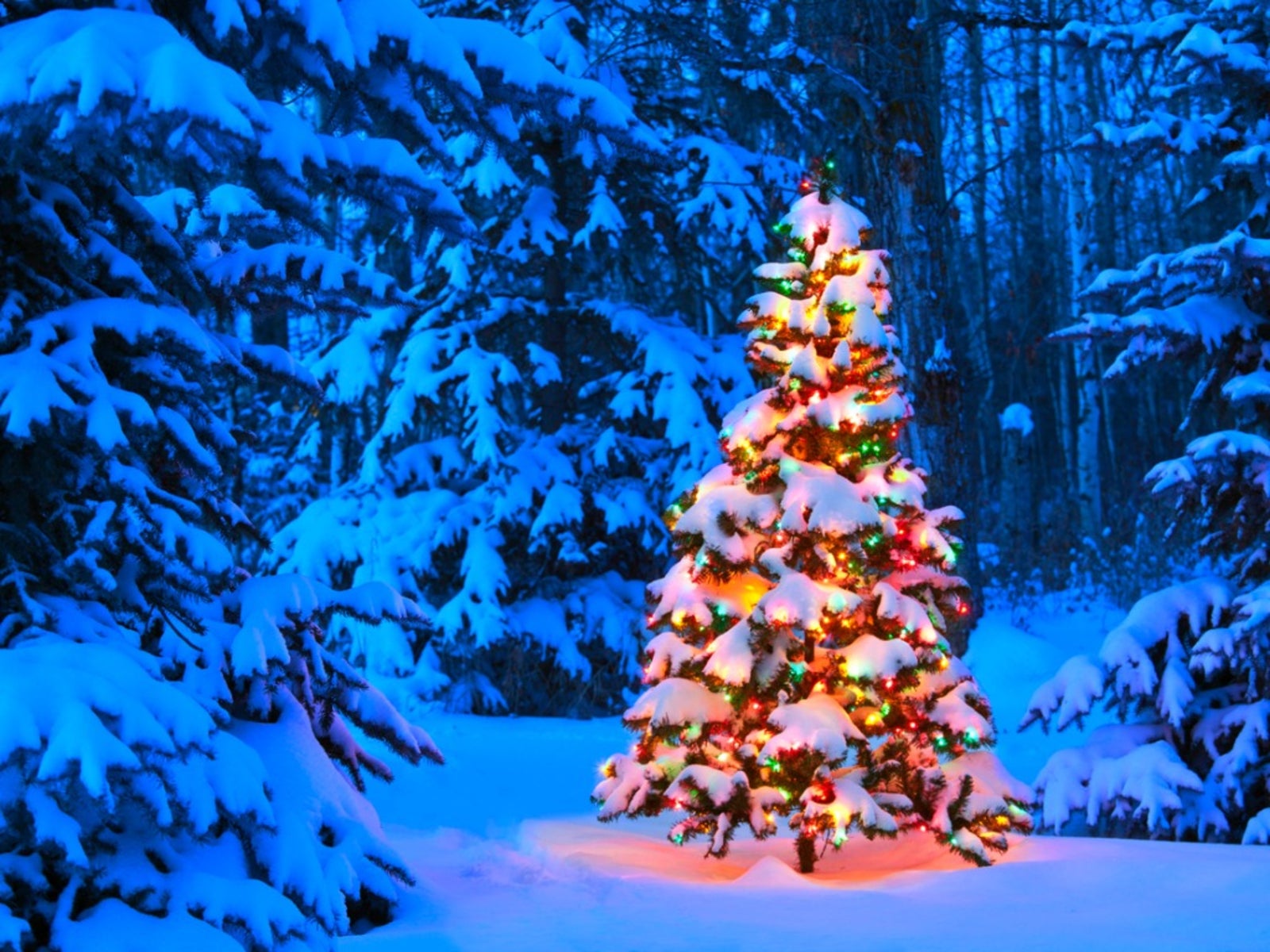8 Mistakes To Avoid When Buying And Caring For A Real Christmas Tree


Choosing the Christmas tree is a highlight of the festive season, with the whole family often taking part.
However, make the wrong choice and your tree will be a source of disappointment throughout the holidays. By the time Christmas has arrived, it may have already dried up and dropped most of its needles.
Good Christmas tree care is vital to making it last – too many people neglect their tree once it is decorated. To keep a Christmas tree alive until New Year it needs the right conditions and regular watering.
Once the holidays are over, proper Christmas tree disposal is important to ensure you are not negatively impacting on the environment.
Avoid these common pitfalls when buying and caring for your tree, and it will be the focal point of your natural Christmas decorations.

1. Choosing an older tree
Don’t make the mistake of buying a tree that’s been sitting round the yard for too long. If the tree is dull in color or has lost its shine, then it has been out of the ground for too long.
‘A sticky and resinous at the bottom of the tree shows that the pine is still fresh,’ says Tom Su, gardening expert and owner of Lawn Edging.
Gardening tips, videos, info and more delivered right to your inbox!
Sign up for the Gardening Know How newsletter today and receive a free copy of our e-book "How to Grow Delicious Tomatoes".
Also avoid a tree that seems to be dropping a lot of needles when you’re examining it. If it is more than a few, don’t buy.
Compare the weights of similar sized trees on sale. Fresh, good quality trees will normally be heavier.
Bear in mind that if you’re buying from a store, rather than directly from the grower, then most trees are cut and shipped at the same time. In that scenario, it is better to buy your tree early, rather than later, so you can get more use out of it.
2. Buying a wrapped tree
A pre-wrapped or netted tree can’t be properly examined and when you unwrap it at home, you might find it is too wide, too tall, or an odd, uneven shape.
‘Choosing a Christmas tree wisely, like a partner, needs scrutinization,’ says Tom. ‘Check for good color, straightness of the trunk, and also a lime-green color of the needles. Pull lightly on a branch: if its needles don’t change position, that's a good sign. The tree should also have a symmetric-looking shape with no major holes visible at first glance.’

3. Picking the wrong species of tree
Don’t make the mistake of buying the wrong type of tree for your home. Understanding Christmas tree varieties will help you to make the right choice.
The Douglas fir is one of the best all-around Christmas tree varieties. The cost is reasonable, and the tree is nicely shaped with full, thick needles. Douglas firs tend to hold their needles very well with and without frequent watering.
The Frasier fir is best for small rooms as it takes up less space, though it is one of the most expensive options. It has a blue-green color and dense, glossy foliage, but still with good needle-retaining properties.
The white pine is another popular Christmas tree variety. It has long needles that are soft to the touch, and gives off that classic Christmas tree scent. The downside to a white pine is that the shape isn’t usually as good, and it can take a bit of work to prune your Christmas tree into the perfect shape.
White spruces are another popular option, and have green branches with a white tint, giving the look of a dusting of snow.
With a lovely pyramid shape, dark green foliage and a rich festive scent, the Norway spruce is a classic option, and ideal if you intend to plant your Christmas tree in the yard after the holidays.
‘Unfortunately, needle drop can be a problem if you go for the Norway spruce,’ says Matt James, a garden designer, horticulturist, and author of How To Plant A Garden.
‘So if the mess bothers you choose a fir tree, but expect to pay more.’
4. Not trimming the trunk
‘When a Christmas tree is cut, the base seals up with sap, blocking further water absorption. Therefore, making a fresh cut off the bottom (about a quarter of an inch) just prior to placing it in water is very important,’ explains Tom.
‘The reopened vascular system enables the tree to suck in sufficient water after this cut. It helps the tree to absorb more water and remain cooler thereafter.’
It is important to cut off the bottom as soon as you bring the tree home. If you can't do this yourself, ask the seller to do it for you at the point of purchase.

5. Bringing it straight into the warm
Whether you buy a cut or a pot-grown tree, don't bring it straight indoors. ‘This will be too much of a shock and only result in needle drop,’ says Matt.
‘Christmas trees are used to winter cold and need to be introduced gradually to hotter rooms. Keep the tree in a cool porch or utility room for a few days before moving to its final position and decorating.’
6. Not providing the right conditions
‘Trees panic and shed their leaves prematurely in hot rooms with heating, so always site them somewhere as cool as possible,’ says Matt. ‘At the very least position the tree far away from radiators and heaters.’
Also consider the humidity in the room. ‘Extremely dry, indoor air is often prevalent during the winter season and can really harm a Christmas tree,’ says Tom. ‘Drought conditions that provide a low humidity level facilitate faster drying which leads to premature needle drop.
'The use of a humidifier in the same room, where the tree is growing, will definitely change things. This adds humidity back into the air making it easy to retain freshness on your tree.’
7. Forgetting to water it
Christmas tree water intake is vital to its longevity. ‘Treat a cut tree without roots just like a bunch of flowers,’ says Matt. ‘After trimming the trunk, dunk it in a bucket of tepid water the minute you get it home. Let the tree have a deep drink overnight before transferring to a bucket or stand with a built-in reservoir.
'Never let the end become exposed for longer than an hour or the sap will seal over stopping the tree taking up water.’
Don't plunge the end into soil or sand either as this will cut off the uptake of water, and always remember to top up the water daily.
For container-grown trees, keep the compost moist – but not wet – at all times. Stand the pot on a tray or giant plastic saucer to protect the floor, with another tray underneath.
8. Not feeding it
Just like with cut flowers, adding sugar to your tree’s water can also help give some extra nourishment to the tree.
‘Embracing this one thing can keep your tree alive and thriving,’ says Tom. ‘Sugar functions as a source of carbohydrates for the tree, increasing the amount of energy it has available to preserve its needles and keep its color for longer time spans.
'Nevertheless, there should be a limit since an abundance of sugar encourages bacterial development in the water.’
One tablespoon of sugar in a gallon of water will be enough to give your tree a boost.

Melanie is an experienced gardener and has worked in homes and gardens media for over 20 years. She previously served as Editor on Period Living magazine, and worked for Homes & Gardens, Gardening Etc, Real Homes, and Homebuilding & Renovating. Melanie has spent the last few years transforming her own garden, which is constantly evolving as a work in progress. She is also a passionate organic home grower, having experimented with almost every type of vegetable at some point. In her home, Melanie tends to an extensive houseplant collection and is particularly fond of orchids.